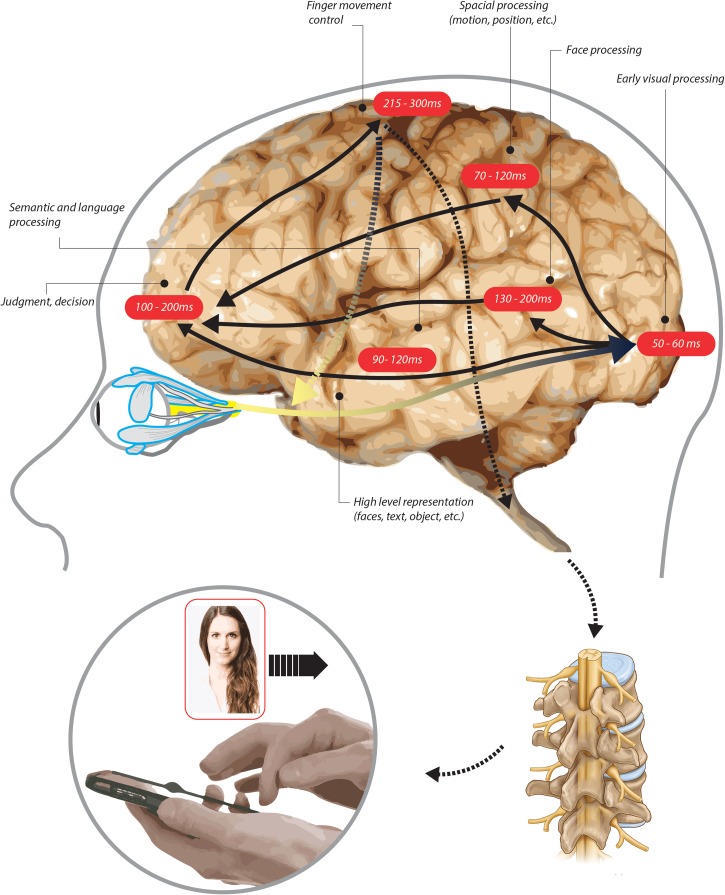FIGURE 6.
Illustration of the decision process and its latencies. Neuroscience estimates on the latency of information processing in the brain suggest that information from the retina is processed at the visual cortex within about 50 ms from the moment a person views an image (e.g., a picture of a person on the Hinge dating app). The information is then assessed in the “where” and “what” pathways within 50 ms more and, given that the images include the face of a person, is processed at the Fusiform Face Area within about 130 ms. Information from all pathways is ultimately aggregated at the prefrontal cortex where a judgment is potentially made. The choice is manifested as a motor control signal at the supplementary motor area which is communicated via the spinal cord to the fingers that swipe left/right to execute the selection. This process should typically last at least a third of a second. However, alternatives to the immediate choice could involve feedback from the Frontal Eye Field to the Superior Colliculus that drives an additional saccade of the eye to a different location on the screen (which, in turn, initiates a repetition of the processing), scrolling the phone screen for more information (using the motor controls) or additional high-level semantic processing (i.e., reading the text on the screen). All of those actions add additional time to the processing. Our results — combining the estimates of the decision making times using the DDM with an investigation of the average decision time allocated to all choices on the app — suggest that the initial selection happens rapidly and is based mostly on salient information. Given that the ultimate EMR reveals a strong preference for partners sharing attributes, information about the homophily could be gathered subconsciously from cues in the app that are indicative of preferences, or through the chat that happens throughout the communication.

